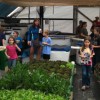 Aquaponics is an intensive sustainable agricultural production system that connects hydroponic and aquaculture systems to produce multiple cash crops with reduced water and fertilizer inputs. It is highly suited for small farm producers targeting local markets and agritourism opportunities. This 10-page fact sheet was written by Richard Tyson and Eric Simonne, and published by the UF Department of Horticultural Sciences, September 2014.
Aquaponics is an intensive sustainable agricultural production system that connects hydroponic and aquaculture systems to produce multiple cash crops with reduced water and fertilizer inputs. It is highly suited for small farm producers targeting local markets and agritourism opportunities. This 10-page fact sheet was written by Richard Tyson and Eric Simonne, and published by the UF Department of Horticultural Sciences, September 2014.
http://edis.ifas.ufl.edu/hs1252
Category: Small Farms
Consuming local vegetables from our local growers
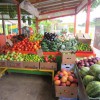 In recent years, consumers increasingly are seeking out locally grown foods, due to concern for freshness, food safety, and the carbon footprint associated with food sourced from distant places. This 5-page fact sheet promotes local vegetable consumption by pointing out some of the advantages, benefits, and business opportunities associated with local vegetable production and consumption. Written by Qingren Wang, Edward A. Evans, Margie Pikarsky, and Teresa Olczyk, and published by the UF Department of Horticultural Sciences, September 2014.
In recent years, consumers increasingly are seeking out locally grown foods, due to concern for freshness, food safety, and the carbon footprint associated with food sourced from distant places. This 5-page fact sheet promotes local vegetable consumption by pointing out some of the advantages, benefits, and business opportunities associated with local vegetable production and consumption. Written by Qingren Wang, Edward A. Evans, Margie Pikarsky, and Teresa Olczyk, and published by the UF Department of Horticultural Sciences, September 2014.
http://edis.ifas.ufl.edu/hs1251
How to Start a Food Business: Introduction
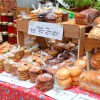 While running your own food business can be a rewarding and exciting experience, it can be overwhelming and stressful. It is important to understand the pros and cons of running your own food business and decide if you are ready to pursue a food business venture. This 3-page fact sheet was written by Soohyoun Ahn, Renee Goodrich-Schneider, and Amarat H. Simonne, and published by the UF Department of Food Science and Human Nutrition, September 2014.
While running your own food business can be a rewarding and exciting experience, it can be overwhelming and stressful. It is important to understand the pros and cons of running your own food business and decide if you are ready to pursue a food business venture. This 3-page fact sheet was written by Soohyoun Ahn, Renee Goodrich-Schneider, and Amarat H. Simonne, and published by the UF Department of Food Science and Human Nutrition, September 2014.
http://edis.ifas.ufl.edu/fs254
Florida MarketMaker and Florida Food Connect: Using E-commerce to Enhance Seafood Marketing in Florida
 While the state and many non-profit organizations provide information to the Florida seafood and aquaculture industry to help them market their catch, they offer few resources facilitating e-commerce. As a business tool, e-commerce can help expedite the buying and selling of seafood products among consumers, producers, and other businesses within the food industry value chain. E-commerce is a new promotional strategy producers can use to improve their marketing efficiency. For example, the affiliated websites Florida MarketMaker and Florida Food Connect are designed to enhance the online presence for the Florida seafood industry. Web portals such as these increase the visibility of seafood businesses by allowing dealers to create a searchable online profile attracting more customers seeking locally sourced seafood. This 6-page fact sheet was written by Charles M. Adams and William Barker, and published by the UF Department of Food and Resource Economics, May 2014.
While the state and many non-profit organizations provide information to the Florida seafood and aquaculture industry to help them market their catch, they offer few resources facilitating e-commerce. As a business tool, e-commerce can help expedite the buying and selling of seafood products among consumers, producers, and other businesses within the food industry value chain. E-commerce is a new promotional strategy producers can use to improve their marketing efficiency. For example, the affiliated websites Florida MarketMaker and Florida Food Connect are designed to enhance the online presence for the Florida seafood industry. Web portals such as these increase the visibility of seafood businesses by allowing dealers to create a searchable online profile attracting more customers seeking locally sourced seafood. This 6-page fact sheet was written by Charles M. Adams and William Barker, and published by the UF Department of Food and Resource Economics, May 2014.
http://edis.ifas.ufl.edu/fe944
Overwintering Honey Bee Colonies in Northern Climates
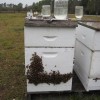 One of the many challenges beekeepers face is minimizing honey bee colony losses during winter. This can be especially challenging to beekeepers in extreme northerly climates. Special preparations must be made during the fall to ensure that colonies survive the winter months with minimal loss. This 3-page fact sheet was written by James D. Ellis and Katherine Hammons, and published by the UF Department of Entomology and Nematology, September 2013.
One of the many challenges beekeepers face is minimizing honey bee colony losses during winter. This can be especially challenging to beekeepers in extreme northerly climates. Special preparations must be made during the fall to ensure that colonies survive the winter months with minimal loss. This 3-page fact sheet was written by James D. Ellis and Katherine Hammons, and published by the UF Department of Entomology and Nematology, September 2013.
http://edis.ifas.ufl.edu/in1006
Directory of Certified Deciduous Fruit and Nut Crops in Florida
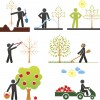 This 8-page fact sheet written by experts at North Florida REC Peter C. Andersen, Robert C. Hochmuth, Sean R. McCoy, and Lei Lani L. Davis, assists farmers in locating recommended cultivars of fruit and nut crops from Florida nurseries. The nurseries listed in Table 1 offer fruit and nut trees and are listed as certified nurseries with the Florida Department of Agriculture and Consumer Services. Table 2 lists fruit and nut cultivars that UF/IFAS Extension specialists currently recommend or suggest on a trial basis. Published by the UF Department of Horticultural Sciences, April 2013.
This 8-page fact sheet written by experts at North Florida REC Peter C. Andersen, Robert C. Hochmuth, Sean R. McCoy, and Lei Lani L. Davis, assists farmers in locating recommended cultivars of fruit and nut crops from Florida nurseries. The nurseries listed in Table 1 offer fruit and nut trees and are listed as certified nurseries with the Florida Department of Agriculture and Consumer Services. Table 2 lists fruit and nut cultivars that UF/IFAS Extension specialists currently recommend or suggest on a trial basis. Published by the UF Department of Horticultural Sciences, April 2013.
http://edis.ifas.ufl.edu/hs1218
Swarm Control for Managed Beehives (ENY160/IN970)
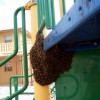 Honey bee swarms are a normal sign of a productive and strong honey bee colony. The population of honey bees in the environment grows and genes are exchanged as the new queen in the parent colony mates with drones from other colonies in the surrounding environment. Unfortunately, this activity often conflicts with the goals of the beekeeper, so good colony management includes swarm prevention. During the swarm season, hive owners should undertake proactive beekeeping practices to alter colonies in response to potential swarming behavior. In this way, the beekeeper maintains strong colonies with greater honey production and the potential to split and increase the total number of colonies, all of which makes beekeeping much more profitable for hive owners. This 6-page fact sheet was written by Sara DeBerry, John Crowley, and James D. Ellis, and published by the UF Department of Entomology and Nematology, November 2012.
Honey bee swarms are a normal sign of a productive and strong honey bee colony. The population of honey bees in the environment grows and genes are exchanged as the new queen in the parent colony mates with drones from other colonies in the surrounding environment. Unfortunately, this activity often conflicts with the goals of the beekeeper, so good colony management includes swarm prevention. During the swarm season, hive owners should undertake proactive beekeeping practices to alter colonies in response to potential swarming behavior. In this way, the beekeeper maintains strong colonies with greater honey production and the potential to split and increase the total number of colonies, all of which makes beekeeping much more profitable for hive owners. This 6-page fact sheet was written by Sara DeBerry, John Crowley, and James D. Ellis, and published by the UF Department of Entomology and Nematology, November 2012.
http://edis.ifas.ufl.edu/in970
Preserving Woodenware in Beekeeping Operations (ENY125/AA244)
 The predominant material used to construct honey bee colonies in the U.S. is wood. Though honey bee hive components are simple in design, they are subjected to many extreme management techniques that cause wear and tear, ultimately shortening the life of the equipment. This article discusses how to protect colony woodenware, particularly the pieces that are exposed to the elements. These include the bottom board, hive body/supers, and lids. This 4-page fact sheet was written by J. D. Ellis, W. H. Kern, and C. M. Zettel Nalen, and published by the UF Department of Entomology and Nematology, June 2012.
The predominant material used to construct honey bee colonies in the U.S. is wood. Though honey bee hive components are simple in design, they are subjected to many extreme management techniques that cause wear and tear, ultimately shortening the life of the equipment. This article discusses how to protect colony woodenware, particularly the pieces that are exposed to the elements. These include the bottom board, hive body/supers, and lids. This 4-page fact sheet was written by J. D. Ellis, W. H. Kern, and C. M. Zettel Nalen, and published by the UF Department of Entomology and Nematology, June 2012.
http://edis.ifas.ufl.edu/aa244
Hydration in Hot Working Environments (FCS80018/FY1325)
 Are you at risk for heat-related illnesses? Summertime isn’t the only time you should be concerned about drinking enough water to stay hydrated. Workers in construction, landscaping, laundry, factory, farm, or restaurant settings, among others, often are faced with hot working environments year-round. These conditions can increase the risk for developing heat-related illnesses, so staying well hydrated is very important. This 3-page fact sheet was written by Jeanine Beatty and Gail P. A. Kauwell, and published by the UF Department of Family Youth and Community Sciences, March 2012.
Are you at risk for heat-related illnesses? Summertime isn’t the only time you should be concerned about drinking enough water to stay hydrated. Workers in construction, landscaping, laundry, factory, farm, or restaurant settings, among others, often are faced with hot working environments year-round. These conditions can increase the risk for developing heat-related illnesses, so staying well hydrated is very important. This 3-page fact sheet was written by Jeanine Beatty and Gail P. A. Kauwell, and published by the UF Department of Family Youth and Community Sciences, March 2012.
http://edis.ifas.ufl.edu/fy1325
Growing Heirloom Tomato Varieties in Southwest Florida (HS921/HS174)
Heirloom tomatoes have seen a rebirth in popularity because of increasing demand for fresh, fully ripe, tasty tomatoes. A tomato must meet three criteria to be considered an heirloom variety: The variety must be reproduced by seed, must have been cultivated for more than 50 years, and must have a history. Heirloom tomatoes are known for their singular taste, shape, and color, which include purple, orange, and yellow, in addition to the common red tomatoes. This 9-page fact sheet was written by Monica Ozores-Hampton, Charles S. Vavrina, and Aline Coelho Frasca, and published by the UF Department of Horticultural Sciences, February 2012.
http://edis.ifas.ufl.edu/hs174
Alternative Opportunities for Small Farms: Peach and Nectarine Production Review (RFAC018/AC018)
 Florida produces some of the earliest commercial-quality peaches and nectarines in North America. During the last 10 years, many new, improved peach and nectarine cultivars have been released by the University of Florida. They have increased the potential for expansion of commercial peach and nectarine acreage throughout much of the Florida peninsula and along the Gulf Coast regions of the southeastern United States. This 3-page fact sheet was written by Mercy Olmstead, Jeff Williamson, Jose Chaparro, and Tim Crocker, and published by the UF Department of Horticultural Sciences, September 2011.
Florida produces some of the earliest commercial-quality peaches and nectarines in North America. During the last 10 years, many new, improved peach and nectarine cultivars have been released by the University of Florida. They have increased the potential for expansion of commercial peach and nectarine acreage throughout much of the Florida peninsula and along the Gulf Coast regions of the southeastern United States. This 3-page fact sheet was written by Mercy Olmstead, Jeff Williamson, Jose Chaparro, and Tim Crocker, and published by the UF Department of Horticultural Sciences, September 2011.
http://edis.ifas.ufl.edu/ac018
The Blackberry (HS807/HS104)
Learn about traditional and promising new cultivars and how to grow them the home landscape. This 10-page fact sheet was written by Peter C. Andersen and Timothy E. Crocker, and published by the UF Department of Horticultural Sciences, May 2011.
http://edis.ifas.ufl.edu/hs104
Distillation of Essential Oils (WEC310/UW355)
Essential oils are volatile, aromatic oils obtained from plants and used for fragrance, flavoring, and health and beauty applications. Learn about the history of essential oils, plant anatomy, and basics of essential oil distillation in this 4-page fact sheet was written by Elise V. Pearlstine, and published by the UF Department of Wildlife Ecology and Conservation, April 2011.
http://edis.ifas.ufl.edu/uw355
Manual 2009 de los Reglamentos del Empleo que Regulan a los Empleadores y Trabajadores Agrícolas de Florida
This handbook by Fritz Roka, Michael Olexa, Katherine Smallwood, Leo Polopolus, and Carol Fountain, is the Spanish language version of the 2009 Handbook of Employment Regulations Affecting Florida Farm Employers and Workers. Published by the UF Department of Food and Resource Economics, October 2010.
FE856 Introducción
FE857 Trabajo del Menor de Edad [Estatal y Federal]
FE858 Derechos Civiles y Antidiscriminación
FE859 Crédito por Ingreso Tributario de Trabajo [Federal]
FE860 Plan de Emergencia y el Derecho-a-Saber de la Comunidad [Estatal]
FE861 Ley del Permiso Médico y Familiar de 1993 [Federal]
FE862 Pruebas y Registro del Contratista de Trabajo Agrícola [Estatal]
FE863 Saneamiento de Campo y Agua Potable [Estatal y Federal]
FE864 Ley de Propietarios e Inquilinos [Estado]
FE865 Ley de los Derechos Humanos de 1977 [Estatal]
FE866 Programas de Reforma de Inmigración [Federal]
FE867 Retención de Impuestos sobre el Ingreso para los Trabajadores Agrícolas [Federal]
FE868 Campos de Trabajo del Trabajador Agrícola Migrante [Federal]
FE869 Viviendas del Trabajador Migrante [Estatal]
FE870 Ley de Protección del Trabajador Agrícola Migrante y Estacional (LPTME) [Federal]
FE871 Salario Mínimo (Ley de las Normas Justas de Trabajo) [Federal]
FE872 Ley de Salud y Seguridad Ocupacional (LSSO) [Federal]
FE873 Ley de Salud y Seguridad Ocupacional (LSSO) Norma de Comunicación del Riesgo [Federal]
FE874 Notificación de Cierre de Planta / Despidos (Ley de Advertencia) [Federal]
FE875 Protección del Polígrafo para los Empleados
FE876 Ley de Portal a Portal de 1947 [Federal]
FE877 Ley del Derecho-a-Saber [Estatal]
FE878 Derecho al Trabajo [Estatal]
FE879 Seguro Social y Seguro Médico [Federal]
FE880 Trasporte—Pruebas de Alcohol y Drogas [Federal]
FE881 Transporte—Reglamentos de Seguridad de Auto-Transporte para los Conductores de Camiones Agrícolas [Federal]
FE882 Transporte—Reglametos de Seguridad de Auto-Transporte para Trasladar Empleados Agrícolas Migrantes [Federal]
FE883 Transporte de los Trabajadores Agrícolas Migrantes [Estatal]
FE884 Indemnización por Desempleo [Federal y Estatal]
FE885 Crédito de Impuestos para Oportunidad de Trabajo (CIOT) [Federal]
FE886 Normas de Protección al Trabajador—APA [Federal]
FE887 Indemnización de los Trabajadores [Estatal]
FCS8708/FY380 Finding Fresh Florida Produce
FCS8708, a 2-page fact sheet by Jennifer Hillan and Claudia Peñuela, provides a chart showing peak times to buy fresh Florida fruits and vegetables. Includes reference. Published by the UF Department of Family Youth and Community Sciences, October 2010.
http://edis.ifas.ufl.edu/fy380
HS1186 Solutions for Small Farmers and Home Gardens: Building a Low-Cost Vertical Soilless System for Production of Small Vegetable and Fruit Crops
HS1186, a 5-page illustrated fact sheet by Bielinski M. Santos, Teresa P. Salame-Donoso, and Shawn C. Arango, provides written and graphic instructions on how to build a homemade vertical soilless (hydroponic) growing system (also known as “bottle grow”) to produce vegetables and small fruit crops at a fraction of the cost of commercially available systems, without occupying premium agricultural land and by utilizing materials available in the home and local hardware store. Published by the UF Department of Horticultural Sciences, November 2010.
http://edis.ifas.ufl.edu/hs1186
AE467 Grower Expectations of New Technologies for Applications in Precision Horticulture
AE467, a 4-page article by Reza Ehsani, Sindhuja Sankaran, and Cristian Dima, reports the results of a needs assessment focus meeting. It provides a synopsis of perceived apple and orange growers’ needs, expectations, and concerns related to the new technologies being developed for various precision horticulture applications. Published by the UF Department of Agricultural and Biological Engineering, October 2010.
http://edis.ifas.ufl.edu/ae467
ENY157/IN872 Theft, Vandalism, and Other Related Crime in the Beekeeping Industry: A Guide for Beekeepers
ENY157, a 2-page fact sheet by C.M. Zettel Nalen and J.D. Ellis, provides recommendations for crime prevention in beekeeping operations, what to do if hives or equipment are stolen or vandalized, and resources for beekeepers. Published by the UF Department of Entomology and Nematology, September 2010.
http://edis.ifas.ufl.edu/in872
ENY152/IN868 The Benefits of Pollen to Honey Bees
ENY152, a 4-page illustrated fact sheet by Amanda Ellis, Jamie Ellis, Michael O’Malley and Catherine Zettel Nalen, provides an overview of the nutritional needs of honey bees with an emphasis on the role of pollen — nutritional content, where it is produced, how it is collected, and how to ensure colony nutrition. Published by the UF Department of Entomology and Nematology, September 2010.
http://edis.ifas.ufl.edu/in868
ENY140S/IN862 Preguntas Frecuentes Acerca de la Abeja Melífera Africanizada en Florida
ENY-140S, a 3-page fact sheet by M. K. O’Malley, J. D. Ellis, P. Herrera and A. S. Neal, is the Spanish language version of ENY140/IN738 Frequently Asked Questions about the Africanized Honey Bee in Florida. It provides information about Africanized honey bees (AHB) in a question-and-answer format. Published by the UF Department of Entomology and Nematology, August 2010.
http://edis.ufl.edu/in862